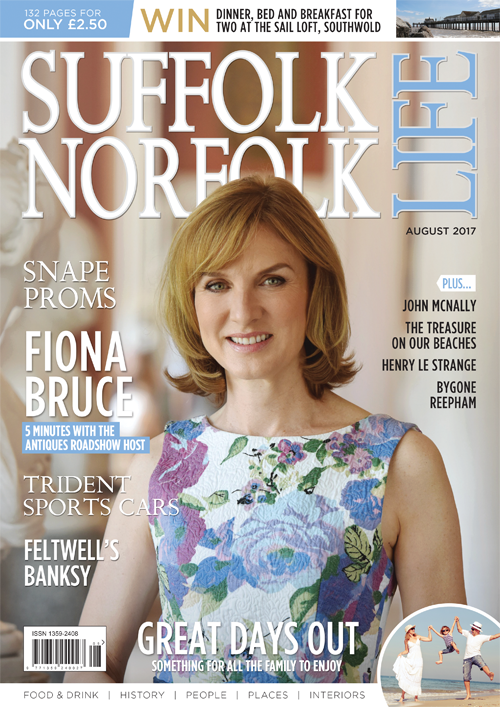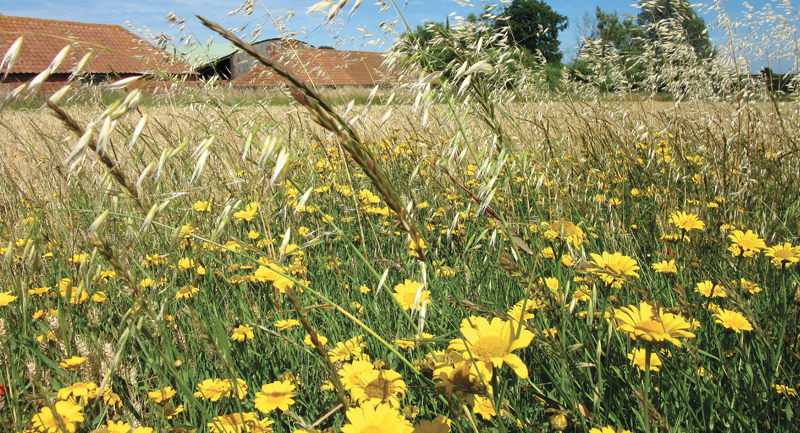- A feature from the August 2017 issue of Suffolk Norfolk Life magazine
 Click to view this issue »
Click to view this issue » - Category
- Nature
Our countryside is losing its colour, says Laurie Forsyth
We saw brown mist on a windy day in May. Dreaded in the arable farmlands of east Suffolk, but rare nowadays, the brown mist was topsoil blowing from bare fields: in the past, it could mean ruin for small farmers. Since moving to the Sandlings in 2005, we have seen it just twice, but never before have we seen water jetting in drifting curtains onto young crops as early as March, as we did this year. Last winter was the driest in East Anglia for 20 years, and it was followed by a cold, dry spring, with less than half of April’s normal rainfall; May was worse.
The wild plants of ‘The Brecks’ are a unique and famous population, and while we can’t compete with that, our local wild plants of the fields are very varied and very beautiful. They are also born survivors – farmers and gardeners have assaulted them for thousands of years, and yet they are still here. Collectively, we call them all ‘weeds’ – a catch-all name that triggers strong reactions in gardeners and farmers alike, and generates huge profits for the people who make chemical herbicides. Weeds are just arable flowers by another name: it’s ugly, so I won’t mention it again.
Cultivated arable fields total 30% of all agricultural land in the UK. Despite the annual cycle of ploughing, seeding and harvesting, over 160 plant species are well suited to life in the fields, and some are now the most endangered wild flowers in the country.

